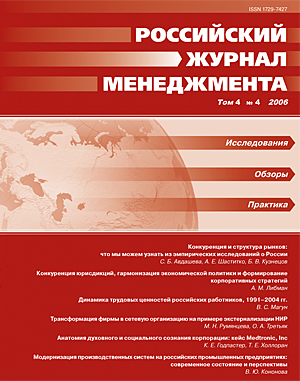Competition and Market Structure: What Can We Derive from Empirical Studies in Russia
Abstract
The paper provides a summary of the results of empiric studies devoted to the processes of competition in Russia. We interpret the results in the framework of institutional and industrial economics. Overall, the results of empiric studies can be generalized as follows. Competition in Russian markets has been gaining momentum over the last 15 years. Results of the empiric studies have confirmed the assumption that competition is an incentive for active restructuring of enterprises. Many of the data collected are evidence in favor of the endogenous market structure approach. The perspectives of the competition in Russian markets depend both external factors and internal structure of the companies. The model of corporate governance that allows to protect property rights restricts the institutional and organizational diversity in Russian markets and therefore competition.
Downloads
References
Downloads
Published
How to Cite
Issue
Section
License
Articles of the Russian Management Journal are open access distributed under the terms of the License Agreement with Saint Petersburg State University, which permits to the authors unrestricted distribution and self-archiving free of charge.





